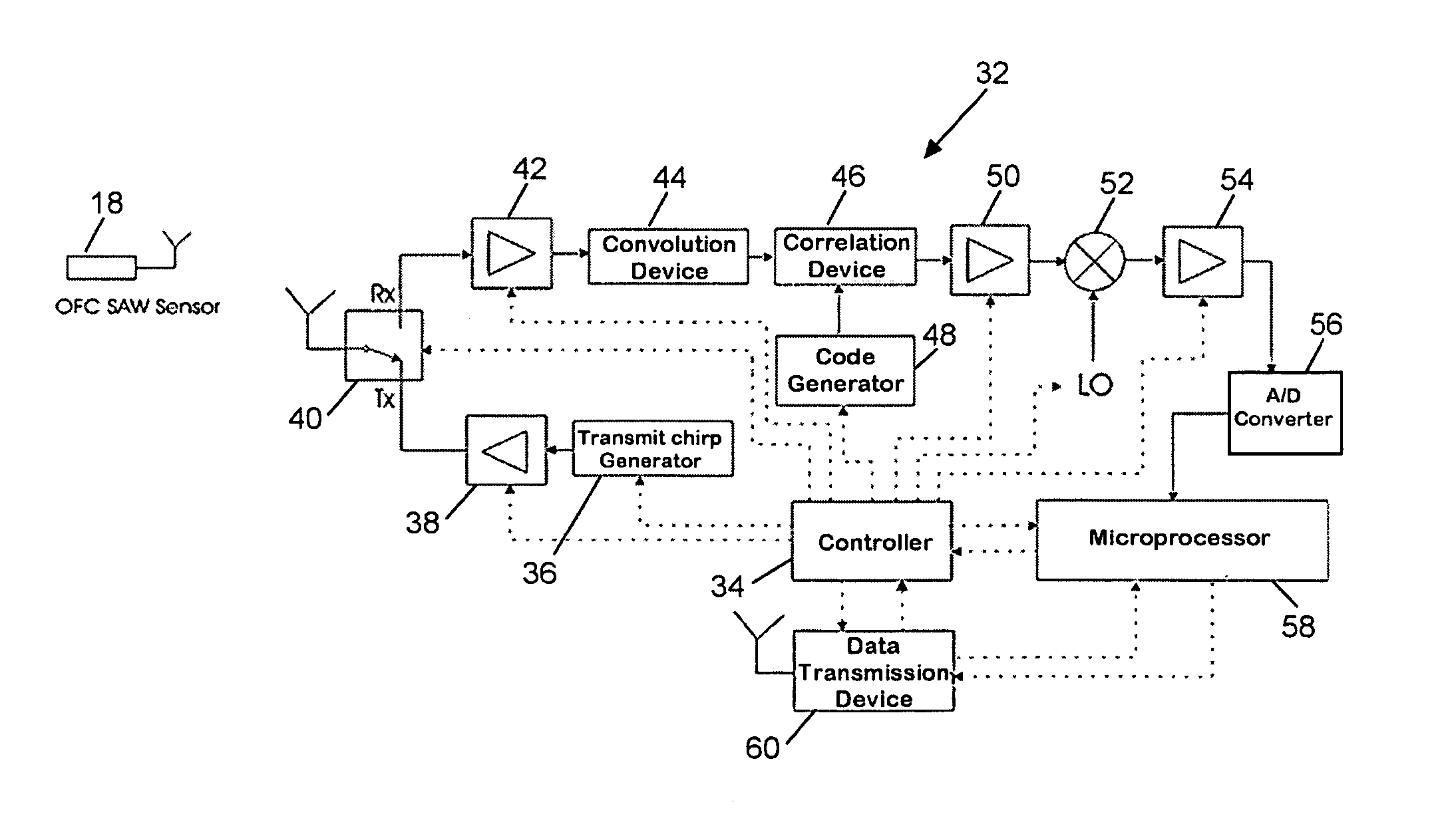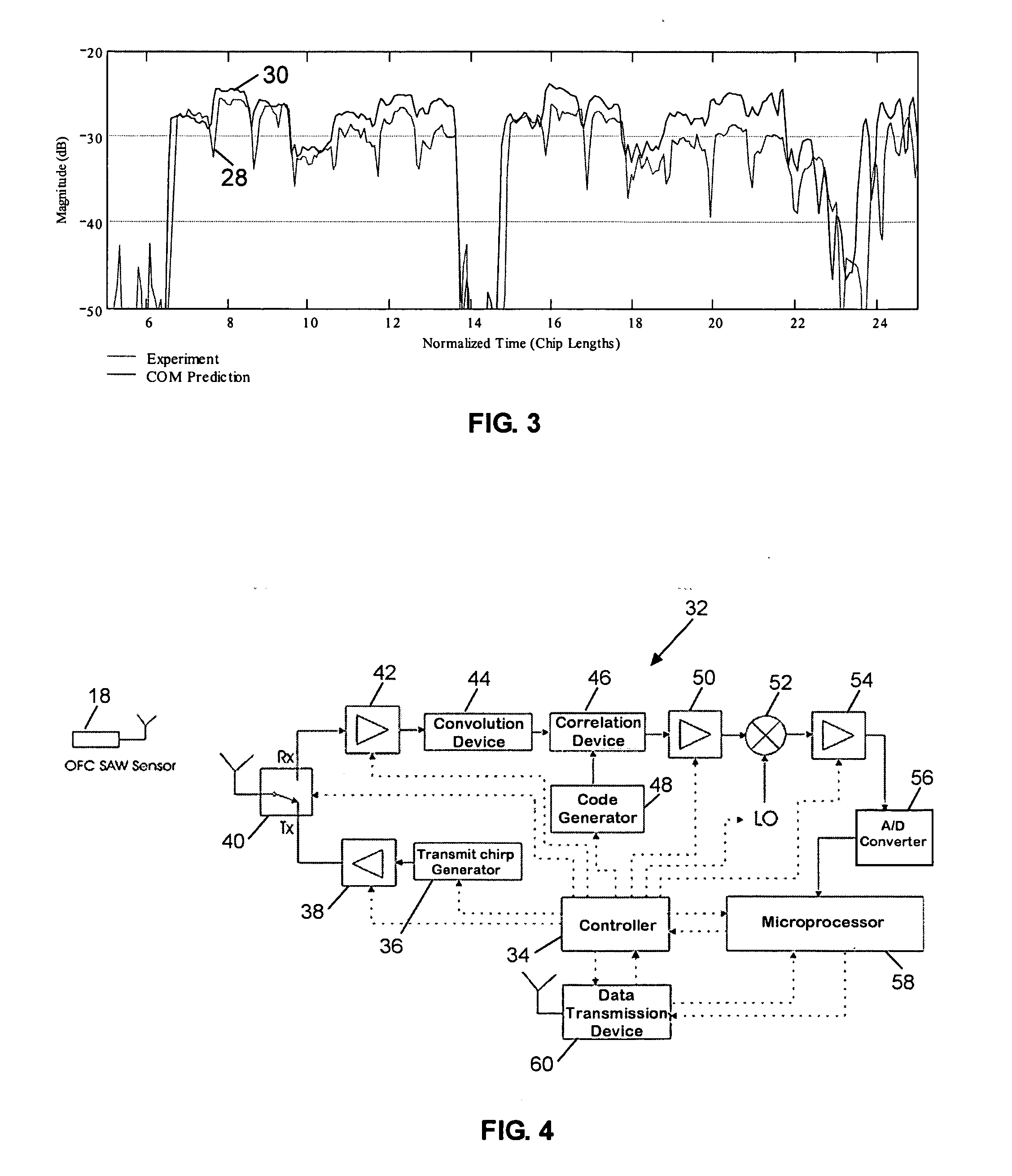Concrete maturity monitoring system using passive wireless surface acoustic wave temperature sensors
a technology of surface acoustic wave and temperature sensor, which is applied in the field of in-situ monitoring of the strength of curing concrete, can solve the problem that the lifetime of the sensor is basically unlimited, and achieve the effect of unlimited lifetim
- Summary
- Abstract
- Description
- Claims
- Application Information
AI Technical Summary
Benefits of technology
Problems solved by technology
Method used
Image
Examples
Embodiment Construction
[0035] The preferred embodiment of the present invention will be described with reference to FIG. 1. As shown therein, a concrete mass 2 is poured in a form or the like (not shown) to form a structure such as a pillar, building wall, bridge section or suspended slab. A plurality of passive wireless SAW temperature sensors 4 with attached antennae 6 are embedded in the wet concrete as the structure to be monitored is poured. An external transmitter 8 generates RF signals to interrogate the sensors. These signals have specific characteristics, designed to efficiently excite the sensors used. For example, FIG. 1 shows chirped interrogation signals 10 being sent out by the transmitter. Such signals would be used in one of the preferred embodiments, in which the SAW sensors are OFC sensors. The sensors receive the interrogation signal and generate response signals 12. A receiver 14 receives the response signals from the sensors, and a microprocessor or computer 16 processes the signals, ...
PUM
 Login to View More
Login to View More Abstract
Description
Claims
Application Information
 Login to View More
Login to View More - R&D
- Intellectual Property
- Life Sciences
- Materials
- Tech Scout
- Unparalleled Data Quality
- Higher Quality Content
- 60% Fewer Hallucinations
Browse by: Latest US Patents, China's latest patents, Technical Efficacy Thesaurus, Application Domain, Technology Topic, Popular Technical Reports.
© 2025 PatSnap. All rights reserved.Legal|Privacy policy|Modern Slavery Act Transparency Statement|Sitemap|About US| Contact US: help@patsnap.com



